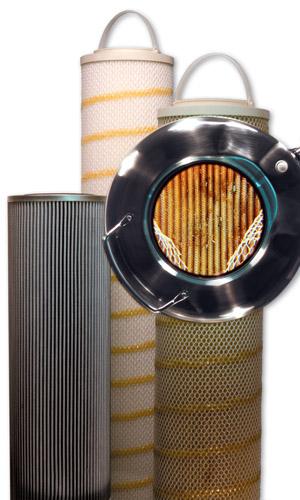Factors That Affect Oil Filtration
There are many factors that can affect oil filtration, including the oil's viscosity, flow and pressure of the oil system, oil type, the components to be protected and their cleanliness requirements, the conditions of the operating environment, and the physical filter (size, media, micron rating, dirt-holding capacity, bypass valve cracking pressure, etc.), as well as the cost of the filter.

Pressure Drop
The maximum pressure drop across a full-flow filter element is determined by the bypass valve spring setting. As a result, a filter with a higher bypass valve cracking pressure will be more effective and provide longer life than a filter that has a low bypass cracking pressure.
Cold Oil and High Viscosity Start-Ups
Engine and hydraulic filters are subjected to varying temperature changes and pressure surges. The resulting increased differential pressures across the element can cause deformation or separation of the filter media pleats if the pleats are not properly supported and designed. This will result in an ineffective filter.
Changes in Flow Rates
When hydraulic oil is subjected to high pressure, some compression of the oil occurs at the rate of about2percent per 1,000 pounds per square inch (psi). If the oil volume in the connecting line is 100 cubic inches and the pressure is 1,000 psi, the liquid compression can reach 0.5 cubic inch. When a directional control or other valve is opened downstream under these pressure circumstances, the sudden increased flow rate can be dramatic.
This shock flow can be several times the pump output when large bore and/or long stroke cylinders decompress quickly while operating at high pressure. When pressure line filters are located some distance from the pump outlet or mounted in the return line, these shock flows can cause filter media bunching or total collapse, particularly in a poorly constructed filter.
Pump Pulsations and Mechanical Vibrations
Machinery and equipment are subjected to operational vibration and pump pulsations. These conditions can dislodge fine abrasive particles from the filter media and allow this contamination to re‑enter the fluid stream.
High Combustion Soot
Diesel engines produce carbon soot during the combustion process. Soot concentrations of more than 3.5 percent can reduce the effectiveness of the anti‑wear additives in the lubricating oil and cause increased engine wear. Standard 40-micron, surface-type, full-flow filters will not remove all of the carbon soot particles, especially those that are in the range of 5 to 25 microns in size.